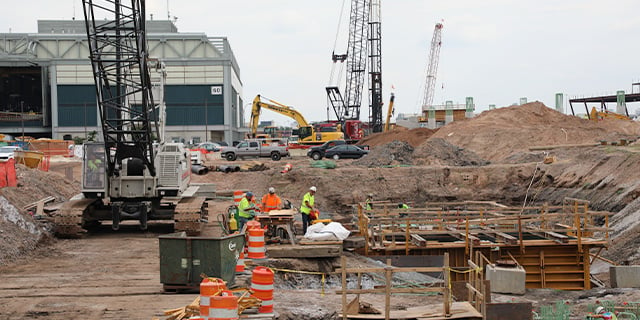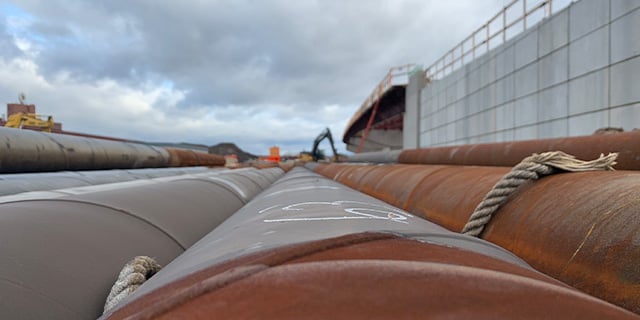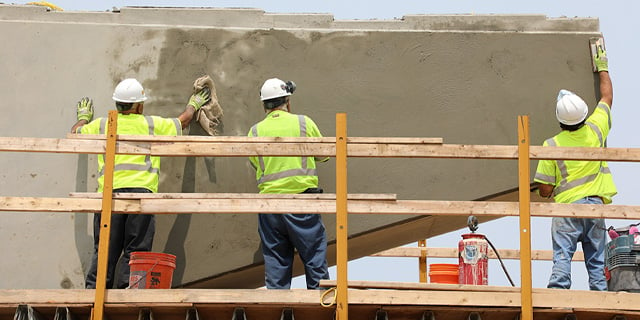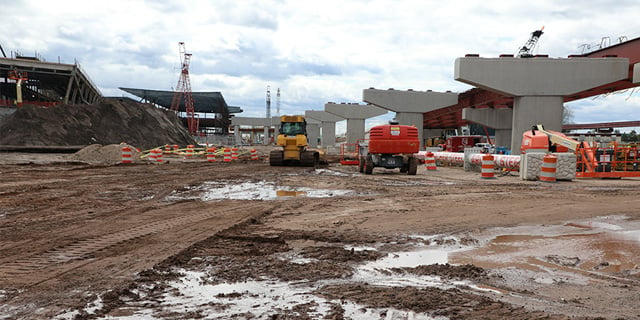
Based on conversations with our partners at FMI and our customers, we know that contractors are looking for guidance for businesses reopening, resources and ways to navigate COVID-19 while remaining profitable and continuing projects. While there are some verticals and geographic areas that have not been hit hard by the pandemic, concerns are growing—especially as it relates to projects classified as “non-essential” and put on pause, material and supply shortages, and labor.
The AGC’s launch of weekly Coronavirus Surveys beginning in mid-March have provided some valuable insights into what contractors are experiencing and the numbers shed light on the impact to the construction industry. Here is an overview of the results. Additional details can be found in the hyperlinked sources.

Projects
As changes to “essential” construction work have become more stringent over the past few weeks, there have been growing numbers of active projects being halted and lettings for future work being delayed. At the time of the survey conducted the week of April 6th – 9th, over 53% of respondents had reported project cancellations. The impact of these cancellations has been much harder on those not working on infrastructure work, with 93% reporting that they are not working on these types of projects.
Despite so many respondents claiming to not work on infrastructure projects, 41% want to see a push of funds into infrastructure spending by congress beyond just the increase in spending levels for multi-year surface work. This desire to have federal spending dollars may be realized with the Phase 4 proposed bill, but with Congress out of session it is uncertain when it will pass and what modifications will be made by both parties.

Materials and Supplies
Although some construction has been deemed still “essential,” the material suppliers may not fall into that category, which can impact the work that needs to be done. While a smaller percentage is affected when it comes to building materials for projects (23%), the number of projects delayed because they lack access to the proper PPE requirements is higher (39%). Overall, the supply chain has been disrupted for PPE and shortages are present for more than just contractors.
Contractors that have access to their own resources, like concrete materials, are less impacted by these challenges than those that do not. For those that do not have easy access to materials and supplies, this has provided an opportunity for them to evaluate their suppliers’ ability to keep up with their needs in order to keep projects moving and implement ways to future proof moving forward.

Labor
The growing number of layoffs is directly related to the number of projects being stopped, postponed or cancelled based on being deemed “non-essential” and/or as a result of not having the necessary materials and supplies to build the project. The latest survey report (as of this writing) out on April 10th shows that 40% of contractors have had to lay off their workers due to the pandemic’s impact on their projects, materials or supplies. While these numbers are expected to grow as more projects get halted, many contractors have looked at the Paycheck Protection Program. This program has been established to help the country recover from the impact of COVID-19. Of those that replied to the survey 64% had applied for funding with only 10% receiving approval and the remaining 54% awaiting approval.

Potential Opportunity
As you look at the numbers and the impact to the industry, we know that it can be unnerving, but in our discussions, we also realize that there could be a silver lining. Contractors, particularly heavy civil contractors focused on infrastructure, are in an interesting position. Many of their projects are deemed essential, but they are also facing a growing level of competition with several projects being pulled back, more contractors bidding on the same projects, and the readiness to complete work being a challenge. With these challenges, there could also be an opportunity.
Brian Moore, a consultant at FMI working with heavy civil contractors, believes that the pandemic also provides opportunities. According to FMI, during the industry disruption caused by the Great Recession, the top quintile of contractors grew more than 20 percent by confronting the crisis and capitalizing on opportunities. “This is a time when contractors should really focus on positioning in the right markets and driving down costs. Market positioning means doing the work to understand the fundamentals of the segments you work in (funding, customer buying behaviors, competitors, etc.) and how they are changing. Driving down costs comes through great field productivity processes and tools, effective management of equipment fleets, and creative strategies to reduce materials cost. While I believe the market effects for these contractors will not be felt in the short term, it is imperative that they take the time now to assess and implement solutions to be more competitive,” said Moore.
Looking Ahead
The new “normal” is one that many contractors are trying to wrap their heads around. Post-pandemic readiness is important, as is taking the time to position for it. We have put together some strategies to assist you in preparing for the future.

About Kristen Olson
Kristen brings experience her diverse experience with The Conti Group to Tenna. From her involvement with essentially every facet of the organization, to start-up initiatives within Conti, with specific organizational change projects to over 17 years focused in Human Resources, she has firsthand knowledge and understanding of the industry and contractors Tenna serves. Her creative mind and non-traditional background results in innovative solutions to the programs, procedures, and standard human resource responsibilities as she works with the various departments within Tenna while always focusing on Tenna’s current and future customers.
